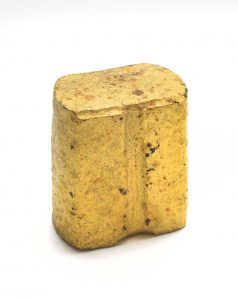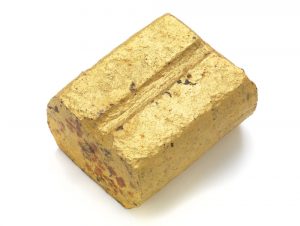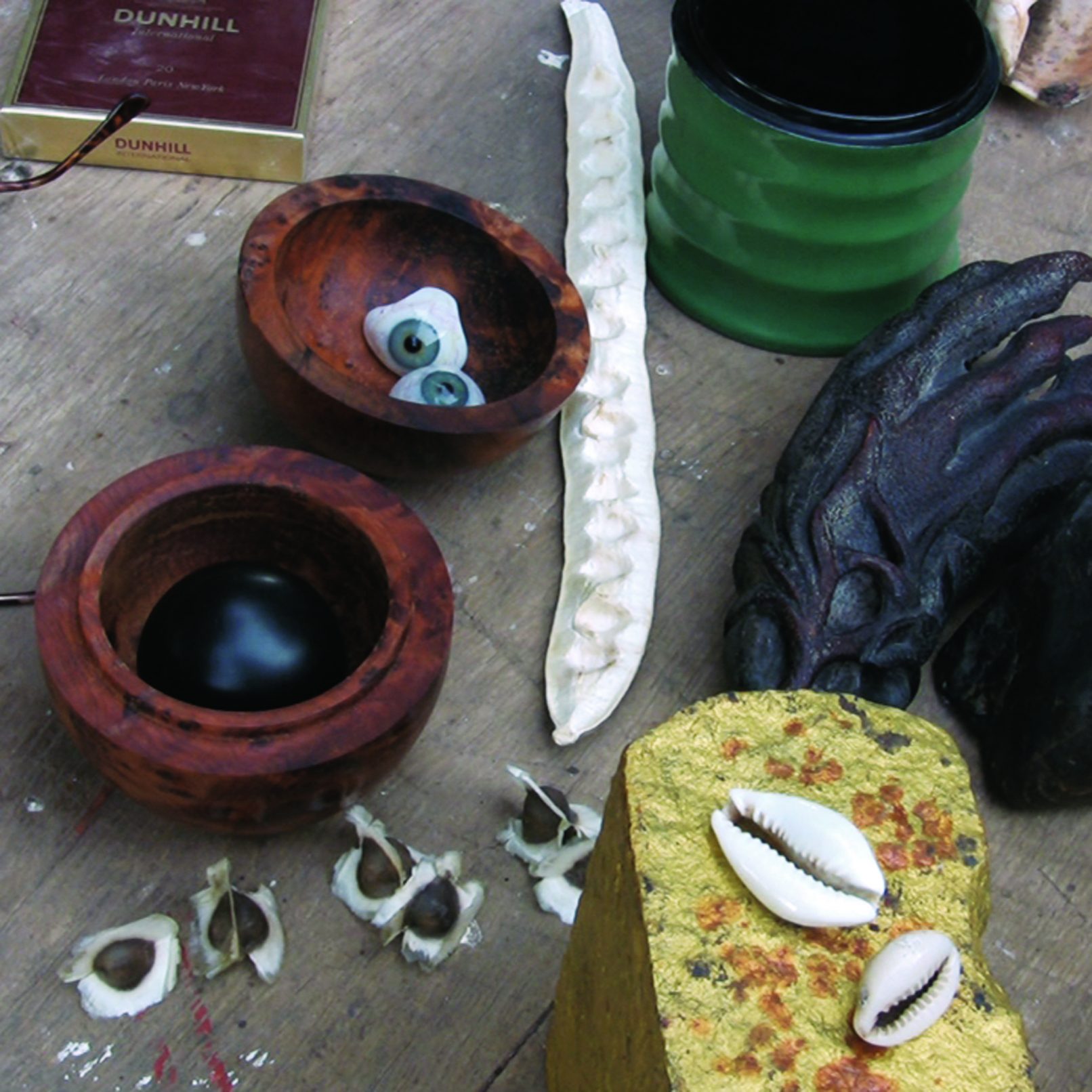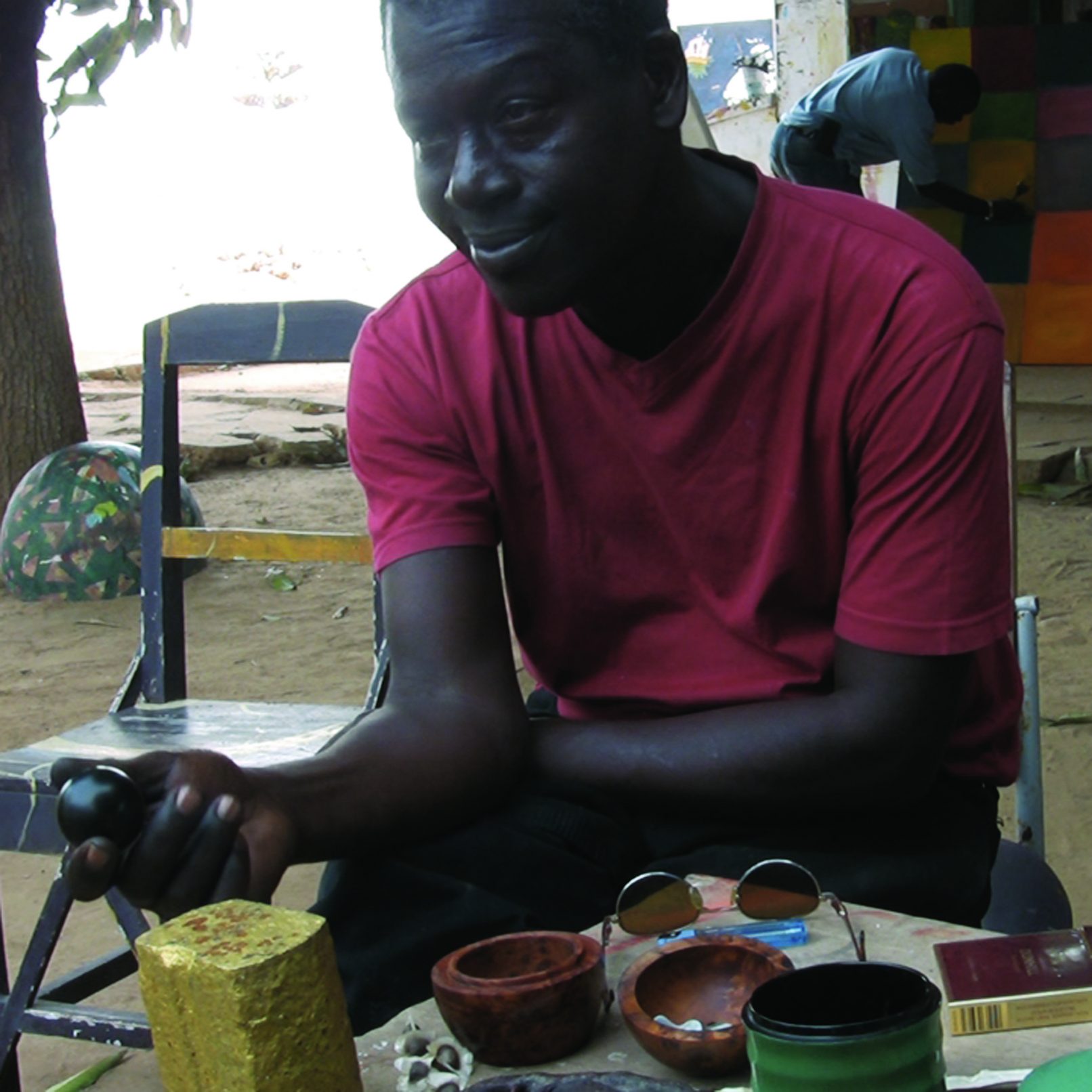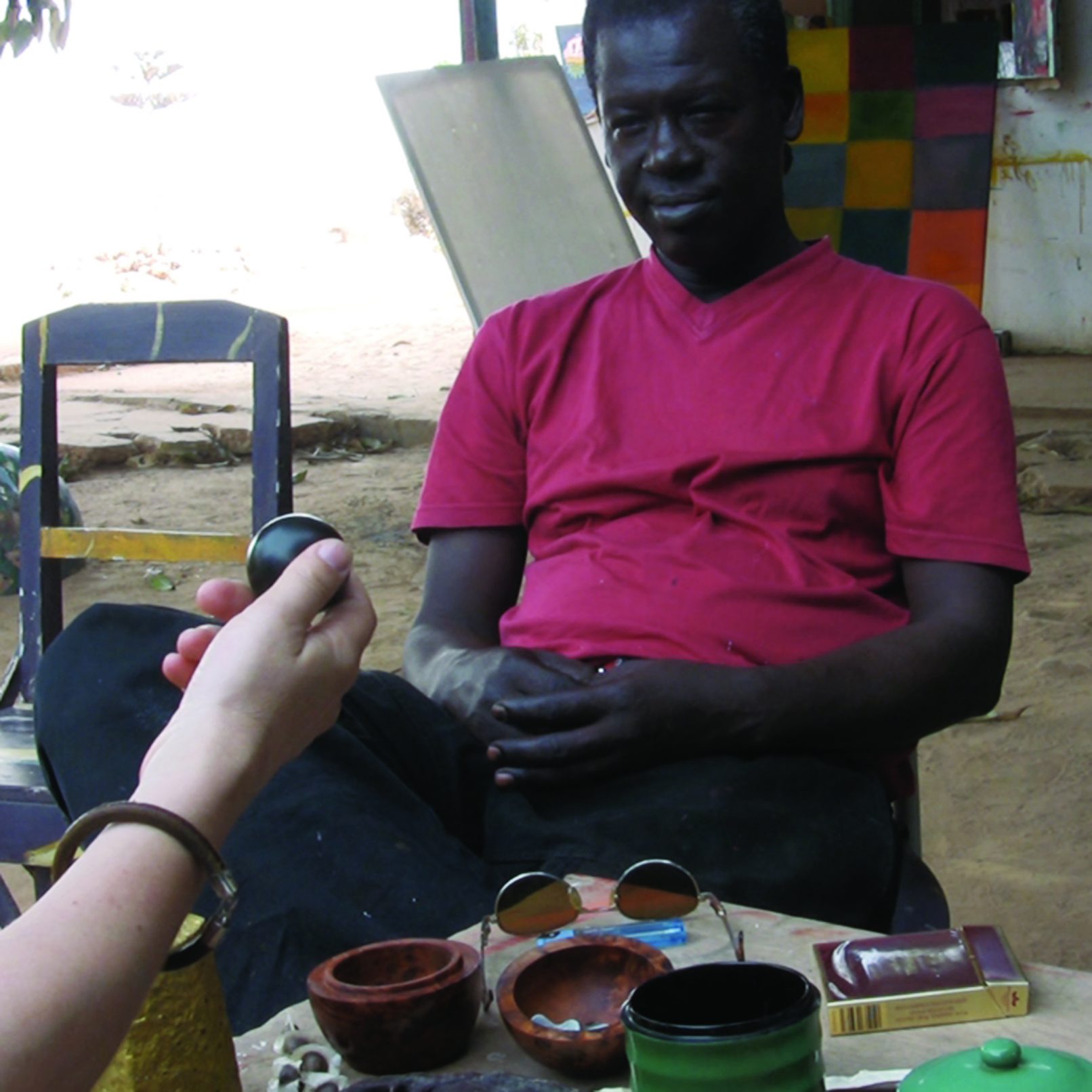La Pierre, la Boule, les Yeux. Conversation entre El Hadji Sy et Antje Majewski, Dakar 2010
The painter El Hadji Sy sits in front of his studio in Dakar and explains Majewski some objects from The World of Gimel she shows him. He draws comparisons to objets trouvés and embarks on a philosophical discussion on the making of art and the gaze/look, implicating a postcolonial viewpoint. The conversation touches on a tombstone for Djibril Diop Mambéty, the historical use of cowry shells as money in Africa, Marcel Duchamp and a text by Sartre for Léopold Senghor. Finally El Hadji Sy offers Majewski a new object he has found and then turned into an art piece as a gift to take home to Germany.
The meteorite is a heavy, magnetic boulder. Scientifically speaking it is not a meteorite, but a magnetite. Oddly enough, it was El Hadji Sy who identified it in our conversation: he doubted that it was a meteorite and suggested that it had come from magma, ori-ginated in the earth’s interior rather than the cosmos. He related the stone to a conversation he’d had with the filmmaker Mambéty, and “in which the question arose, ‘What has God put into the stones?’” Mambéty’s last film was to have been called The Little Stonecutter Girl. After his death, El Hadji Sy looked for a natural, round stone that, in a symbolic sense, “is” Mambéty to him. To him, my “meteorite” was associated with the dead. In one part of the conversation he told me that the young people in Senegal go into the forest for initiation. If one of these children dies during this period, then a large stone is placed at the entrance to the village for him.
We over here in Europe set stones for our dead, too. Engraved on my father’s tombstone—which resembles my meteorite — is a text by Friedrich Hölderlin. This symbolic setting of gravestones seems so obvious to us that we no longer ask ourselves how the stone bearing the name of the deceased becomes his double: receives gifts of flowers, fire and water.
Because my meteorite/magnetite contains metal and is highly magnetic, it also stands in relation to tools. El Hadji Sy gave me a strange object as a gift: a metal block that (unlike mine) was not made naturally, but had been left behind by the Chinese workers who had built the stadium in Dakar. Economic relations between China and African countries have to do with more than just China’s need for raw materials; the Chinese have been building stadiums, railroads and government buildings in African countries for a long time. Unlike the Europeans, they have long recognized that Africa is also a market, even when it comes to only very cheap objects.
El Hadji Sy did not know what purpose this Chinese block of metal had served, but he had given it a new meaning by painting it gold. The block resembles a gold ingot without taking on its symbolic function (otherwise I would not have been able to get it through customs in my hand luggage). At the beginning of our interview, El Hadji Sy had spoken about the cowry shells that had once been used as currency in Africa. Even money is nothing more than a symbolic agreement that works in a way that is similar to magic. The gold ingot speaks of value but has none. It is nothing more than a found object that can’t even exercise its function as a tool anymore. Nevertheless, it carries within itself the whole of China and the moment of its history, when China struck out in the direction of global capitalism (Issa Samb). Like the distinction El Hadji Sy makes in our conversation: this gold ingot is the same object it once was in China; it is what it was when the Chinese left it behind in Senegal, but it also took on a new meaning with El Hadji Sys’ intervention: that of non-convertible value. And I was allowed to take this value back to Berlin as a gift.
